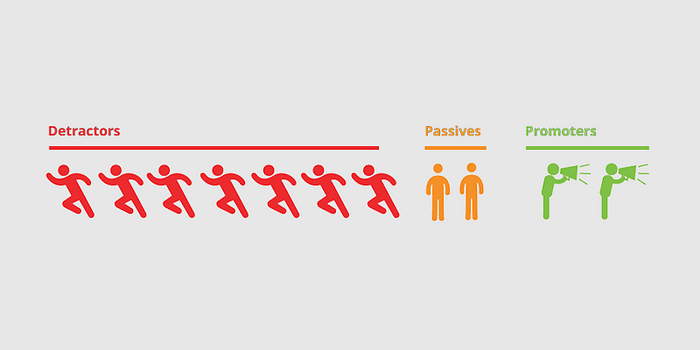The state of UX Research in 2020

The UX field has gone through some major transformations in the past few years. As the goals of businesses change, technology improves, and design-thinking expands, UX research must shift to provide the greatest impact in the next generation of delivered experiences. As a UX researcher in 2020, what are some major emerging trends to be aware of?
Last year I wrote an article about UX research in 2019. I provided insights into UX research driving digital business strategy, the data driven design process, and agile UX research.
This year, I decided to add a few emerging trends and provide more content to last year’s themes.
Here are my themes for UX Research in 2020:
- Democratization… and the chasm of longing and pain.
- Product & research ops... I need data & users please.
- The NPS war… the paradox of research.
- CX & UX… is that my job or your job?
- Digital strategy... from products to platforms.
Democratization of UX Research
My wonderful colleague, Joanne McLernon, and Steve Mulder gave a lovely presentation last year at UXPA Boston about democratizing UX research. The image that remains in my head to this day is the following graph showing the chasm of pain and longing.
This concept, of having far more projects than available research resources, is a shared challenge among organizations. In order to continue progressing and maturing UX, companies must learn to teach and evangelize effectively. Now, I’m not saying your CEO should go run a highly complex, mixed methods study, but designers, product managers, and even some developers can start learning how to manage low complexity research projects when resources are scarce. As this trend continues, research teams are developing artifacts to better assist our extended family; playbooks, best practices, examples, templates, and training are just some of the ways that organizations are creatively solving this challenge. Just be sure your training artifacts are easy to use.
Learn more about how Jen Cardello is doing this at Fidelity, here.
Product & Research Ops
I need data… and users please.
Pendo defines product operations as, “an operational function that optimizes the intersection of product, engineering, and customer success.” This definition brings us away from standard concepts of operating costs and product revenue, and allows for a more holistic, customer-centric mental model. As the product industry shifts from vanity to actionable metrics, it’s not enough to say Product A is increasing or losing X% of MRR or users; while that information is good to know, it doesn’t give us any idea around why or what to do. Mature data organizations are able to bring several sources of data together (financial, user behavior, NPS or feedback, etc.) to better understand how the changes to a product impact the business. Tying performance and perception metrics together allows us to better understand the experience and prioritize where research can make a major impact. After design and research iteration, this method can be extended to associate changes in design or workflow with business level KPIs. The ability to tell this type of business story is crucial for UX leadership and requires teams to have some level of data literacy. Product ops will be able to assist with useful data, but we still need research ops to help us achieve faster insights.
To introduce research operations, I’ll start with two examples from 2019 that I think try and solve for the challenge of requests > resources. The first example was at the end of a recent presentation from Google where an audience member asked, “how did you recruit for this study?” The researcher from Google responded, “well… we’re Google.. we have a team dedicated to sourcing our participants.” The second example was a conversation with a researcher at Microsoft who explained that they can turn some research studies around in a week, since they leverage an operations team to recruit users for studies. Sounds great for Google & Microsoft, but why is this important? Well, as Agile development continues to grow (for better or for worse) it is becoming increasingly difficult to provide sound research within an appropriate time frame. Getting ahead of the sprint cycles can help, but in reality the biggest bottleneck (especially in B2B companies) tends to be recruiting. Now, trying to budget, organize, hire and maintain a research operations group may not be feasible for most companies, so I recommend two things:
- Leverage your sales & account teams. There exists a network effect of value in using this method. For the customer, they have the opportunity to explain their needs and expectations for the product over time. For the product team, they have the opportunity to recruit users for research at a much faster pace, since they are leveraging a growing list. In order to work effectively, it is important to explain to account teams the value add to the customer, in this case.
- When getting in-product feedback (via in-product communication channels), simply ask customers if they would be willing to participate in future research. I’ve done this with several projects at my company and have been able to build out participant databases to leverage in UX research studies. This has decreased our recruiting time substantially for those products, which in turn means faster research and more insights used (and risk mitigated) in the product’s development.
It will be hard for us to argue for product development to slow down so we have time to do our research; we need to be creative about our solutions and not let products be delivered at light speed with no direction.
The NPS (Net Promoter Score) War

On a scale from 0–10, how likely are you to hear about NPS? Probably a 10. This could be an article on its own, but I’ll attempt to summarize some key points to keep in mind. I want to start by saying that NPS works well in some scenarios and less so in others. We have a few veterans in the UX world who are strongly opinionated (and loud) about NPS and, unfortunately for our industry, those veterans are expressing their opinions without doing research to validate them. In many cases, they are extending these arguments beyond NPS to metrics in general. This is like having an opinion about a design and saying “no, I’m right, let’s just move forward with this design” — if we ask product teams to use research to improve their product decisions, why do we not use research to better understand our opinion on NPS and metrics?
Well, thankfully, folks like Jeff Sauro have done extensive research on this topic and, as a researcher should, he recommends doing your own research to validate if NPS is right for your organization. With that being said, the argument against metrics in UX is a dangerous fallacy. To ignore metrics and data as a UX professional is a sure way to put yourself at a disadvantage. Think about it this way, if someone asks you, “did the design changes we made because of your research recommendations improve the experience?” — that is something any researcher should be confident in answering with appropriate measurement. My two cents: become familiar with what to measure, how to measure, and how it translates to business language. Not only does this add credibility to the UX research industry, it’s our ticket to help drive the digital strategy of the company.
CX & UX
Is that my job… or your job?
I’m going to start by giving a researcher’s answer… it depends. At the highest level, we’re all on the same team trying to ensure the best possible experience is provided to customers (CX), users (UX), developers (DX), partners, employees, and anyone else who comes in contact with our products. In B2C, our customers are often also our users and perhaps the organization has CX structured as the purchasing journey and UX as the product use journey. In B2B, our customers are often not our users; they are the decision makers, but there are teams at the customer’s organization that “use” the product. There are a few important things to remember here:
- The customer, user, etc. should never visibly see the divide — the experience should be uniform and seamless all the way through.
- CX and UX have to work together and agree on a best path forward. At my organization, we started leveraging internal marketing and product summits to stay aligned.
- Foster a good relationship between groups; CX and UX researchers should both be strong in qual and quant research methods and should share best practices.
At the end of the day, the way to provide the best possible experience is to effectively communicate and share a unified vision of that ideal delivered experience.
Digital Strategy
This is one of my favorite topics — how are businesses adapting their digital strategies to new technologies and adhering to changes in user behavior?
My favorite line from a book in 2019 is “define your business around your customers, not your products or competitors.” Amazon’s empire could not be a better example of this. In a 2008 Wired magazine article, criticism of Bezos’ decision to move into cloud computing sounded like this, “Earth to Jeff; You’re a retailer. Why swap pricey stuff in boxes for cheap clouds of bits?” His response, “We’re very comfortable being misunderstood.” Oh… and AWS had 43% YOY growth by 2017. Amazon, for quite some time, has realized the value of defining their business around the needs and ecosystems of customers rather than competitors.
Product → Platform

Platforms were originally thought of as marketplaces that connected buyers and sellers (think Ebay or Craigslist), but platform strategies have expanded well beyond the typical buyer & seller marketplace. Google’s investment in Nest was not about Google getting into the thermostat market, it was the strategic vision of Nest becoming the smart home platform. You can visit the Google store and see all of the products that have been re-branded to Nest, as part of this platform strategy. This strategy is also not confined to the B2C space; more and more companies in other industries are leveraging platform strategies as a competitive advantage. For example, GE started collecting more data on its assets to improve efficiency gains; this led to internal and external applications being built for their cloud-based system, Predix, and brought GE from selling just products to selling outcome-based services.
What does this mean for UX? It means we have to better understand not just the solo happy path workflows through a single product, but how users are engaging and interacting with an ecosystem of products and applications. We must consider not only multiple channels of interaction (think mobile & desktop), but also multiple applications within a platform and the supplemental use of a number of them to accomplish tasks and utilize new found efficiencies.
Thanks for reading and please share your thoughts. I’d love to hear more from the experiences and perspectives of others on these topics.






